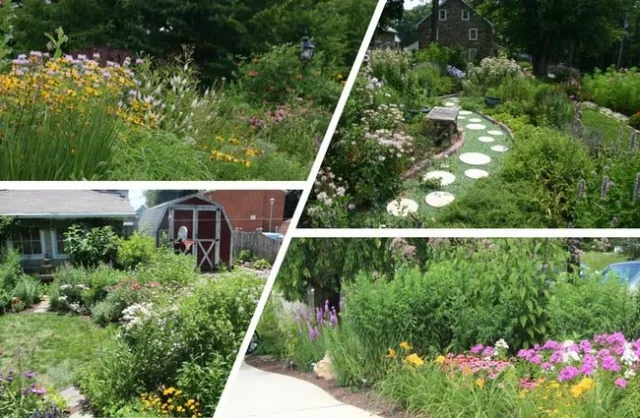When it seems that winter will never bid us goodbye, gardeners are busy anticipating spring with planning and scheming of ways to make their gardens even more beautiful and productive than ever before! Whether you are planting a vegetable garden, growing fruit trees, or you just love watching pollinators in your garden, the best way to succeed at all three is by keeping plants that bees, butterflies, and other pollinators love to visit! We have received inquiries at the help desk from gardeners wondering just which plants are best for attracting these pollinators and keeping them happy enough to stay a while!
Plants have evolved through time to offer unique flowers that attract select pollinators, thus ensuring that the pollinators' visits will provide them with another year of flowers and fruiting. The end result of the pollination process is that humans and animals of all kinds benefit from a bountiful supply of food and beauty. Nearly all ecosystems on earth depend on pollination of flowering plants for their existence and survival; furthermore, from 70 to 75 percent of the world's flowering plants and over one-third of the world's crop species depend on pollination for reproduction. So, considering these statistics, we see how vital pollination and certainly pollinators really are! We have bees, butterflies, bats, hummingbirds, and many flies to thank for this.

So how do we best go about attracting these beautiful creatures? Here are a few things to keep in mind when you begin thinking about a pollinator garden:
Mix up your plantings. Different pollinators respond to different colors.
Create drifts. Many pollinators are near-sighted, so it's easier for them to find flowers where there's a large bunch.
Be sure there is water nearby. This can be as easy as adding a bird bath or a puddling area for butterflies or as complex as installing a water garden. You can provide water by hanging a dripping bottle. You can make a waterer by filling a non-porous plant saucer or a shallow dish with rocks and water. Bees and butterflies become reliant on these sources so it's important to keep your waterers filled.
Provide shelter. Dead leaves and plant material are food and shelter for pollinators in the winter. Resist the urge to rake your leaves in the fall and let them support pollinators throughout the winter season.
Try trees. The flowers of native perennials and annuals are excellent nectar sources for pollinators, but to really up the impact of your pollinator-friendly garden, plant a flowering tree! The amount of nectar and pollen potential gleaned from a single tree may be equal to that of an entire field of wildflowers. Trees also provide shelter for native nesting bee species and carpenter bees. Native trees' bloom periods are synchronized with local pollinators' life cycles, and when they're planted in the climate zone and soil conditions in which they evolved, they require little maintenance.
Try to stick to the natives! Your pollinators are locals so your plants should be too! Since our pollinators have existed alongside these native plants, they tend to instinctively seek them out. Exotic flowers can look appealing to us, but they tend to contain very little pollen or nectar the bees can use.
Following these basic guidelines should bring you an abundance of beautiful creatures to enhance your garden!

